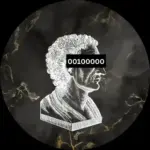Up – Basics Chapter 1
Down – Basic Chapter 3
🗃 Resources – YouTube Video | Replit Chapter 06
What is a variable?
Variable is like a container that holds data. Very similar to how our containers in kitchen holds sugar, salt etc. Creating a variable is like creating a placeholder in memory(RAM) and assigning it some value. In Python its as easy as writing:
a = 1 b = True c = "Varun" d = NoneThese are four variables of different data types.
What is a Data Type?
Data type specifies the type of value a variable holds. This is required in programming to do various operations without causing an error. Refer Primitives and Objects to see other data types.
In python, we can print the type of any operator using type function:
a = 1 print(type(a)) b = "1" print(type(b))By default, python provides the following built-in data types:
1. Numeric data: int, float, complex
- int: 3, -8, 0
- float: 7.349, -9.0, 0.0000001
- complex: 6 + 2i
2. Text data: str
str: “Hello World!!!”, “Python Programming”
3. Boolean data:
Boolean data consists of values True or False.
4. Sequenced data: list, tuple
list: A list is an ordered collection of data with elements separated by a comma and enclosed within square brackets. Lists are mutable and can be modified after creation.
Example:
list1 = [8, 2.3, [-4, 5], ["apple", "banana"]] print(list1)Output:
[8, 2.3, [-4, 5], ['apple', 'banana']]Tuple: A tuple is an ordered collection of data with elements separated by a comma and enclosed within parentheses. Tuples are immutable and can not be modified after creation.
Example:
tuple1 = (("parrot", "sparrow"), ("Lion", "Tiger")) print(tuple1)Output:
(('parrot', 'sparrow'), ('Lion', 'Tiger'))5. Mapped data: dict
dict: A dictionary is an unordered collection of data containing a key:value pair. The key:value pairs are enclosed within curly brackets.
Example:
dict1 = {"name":"Sakshi", "age":20, "canVote":True} print(dict1)Output:
{'name': 'Sakshi', 'age': 20, 'canVote': True}
